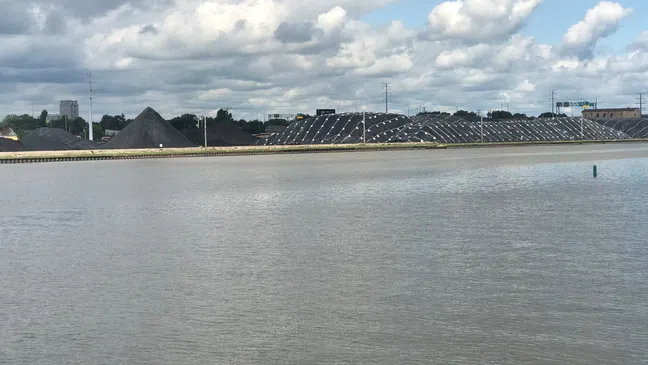GREEN BAY, WI (WTAQ) – The day after Brown County received a $500,000 idle site grant from the state, the county announced plans to purchase the former Pulliam power plant property along the Fox River.
The plans are to turn that property into a working port.
“This site has been identified through our strategic plans, back as early as 2010, as a vital asset for not just the Greater Green Bay area and Brown County, but northeast Wisconsin’s economy,” said County Executive Troy Streckenbach. “Brown County and the Port of Green Bay was very interested in this site, primarily for the purpose of growth and protecting our industries that serve northeast Wisconsin’s economy…Our interest of course was in port growth. Preserving the water access for the working river that it always has been, recognizing that our strength here in Brown County is dependent upon the northeast Wisconsin economy growing.”
The Pulliam plant was active for nearly 100 years. Wisconsin Public Service President Tom Metcalfe says it’s impressive that Calvin Coolidge sat in the White House when the first of eight units went into service there in 1927.
However, the closure of the plant was part of a broader strategy for WPS to lower greenhouse gas emissions in the state and invest in renewal energies. Metcalfe says they’ve already lowered emissions levels by 40-percent since 2005, and that they’re on track to cut emissions by 55-percent by 2025, 70-percent by 2030, and become carbon net-neutral by 2050.
As for the future of that property, Metcalfe likes that it will continue to impact the local economy.
“We’re really excited for this opportunity, providing a new lease of life for a property which I only think can be described as a workhorse for the economy,” Metcalfe said.
However, the conversion of the area into an active port isn’t going to be an overnight change.
“In order to even have the conversation, you need to have control. So from that standpoint, we’re in the first stage of a many-stage process in terms of doing that buildout long-term,” Streckenbach explained. “The remediation, the buildout of the docks – there’s a lot of steps involved. So hopefully within five years, in the perfect set of circumstances, we’ll have the buildout of the docks and the dredging that’s required.”
But again, the county likely wouldn’t have had the ability to make the offer in the first place without a little bit of help from the Wisconsin Economic Development Corporation. WEDC Secretary and CEO Missy Hughes says, after getting a call in mid-November saying there was a gap that needed to be closed, her team put this move on the fast track for an idle sites grant.
“It is exactly meant for this moment. When there is a piece of property that is vital to the economic health of the area, and we can step in and provide that financing gap,” Hughes explained.
Hughes says she, Green Bay Mayor Eric Genrich, and Governor Tony Evers all had a similar response to taking action on the site: “Hell yeah!”
“I have spent time in Green Bay, meeting with the leaders of Green Bay, and understand that there is a future vision for the northeast section of the state. And it is led by these leaders,” Hughes said. “I have seen throughout the state, many businesses stepping in as leaders. But nowhere have I seen it the way I see it in Green Bay. The businesses here are incredibly devoted to the future of the area.”
“An idle sites grant has been really game-changing for us in making this deal possible,” Genrich said. “This enables us to continue to grow the port, grow the amount of economic activity that occurs in northeast Wisconsin.”
In the process of creating the port, the plans would also move the coal piles out of downtown Green Bay to an exclusively industrial area.
Efforts to move the coal piles — which have been on the property south of Mason Street since 1904 — have been ongoing for years. With the county’s purchase of the property, Green Bay Mayor Eric Genrich says negotiations to move the piles can begin with the coal’s owner, C. Reiss Coal Company.
“I would love to see a river that is activated for the 21st century. Continue to see light industrial uses, continue to see entities using the river to benefit the economy, but to see all that done in a clean way,” Genrich said. “What the residents would like to see is very much what we want to make happen. I think it makes sense to have mixed use development on some of that property, but it’s really important to demonstrate port growth.”
For now, the total amount Brown County is set to pay for the property is not being released due to a non-disclosure agreement within the deal between the county and WPS. That NDA also doesn’t allow Streckenbach to say if they’re planning on purchasing all 220 acres of the site.
Final approval of the deal will be voted on by the Brown County Board of Supervisors on January 20th.


